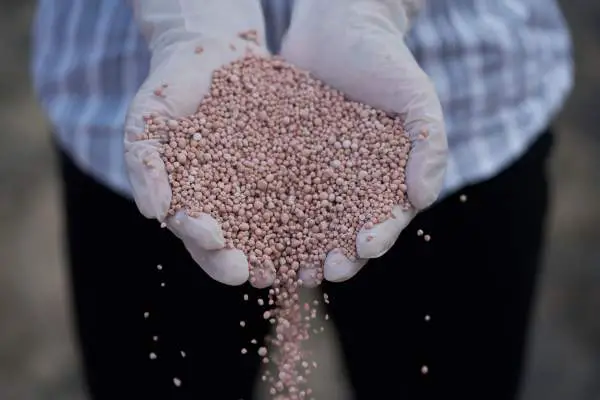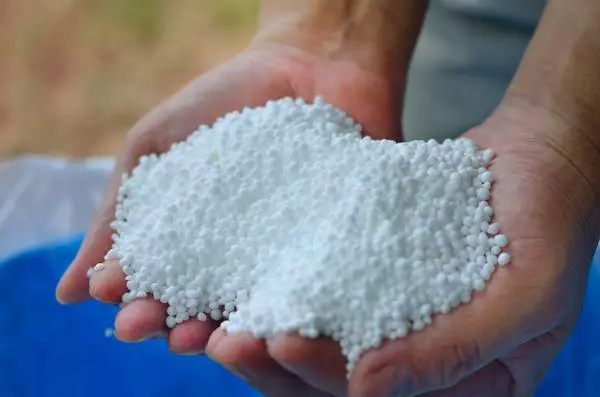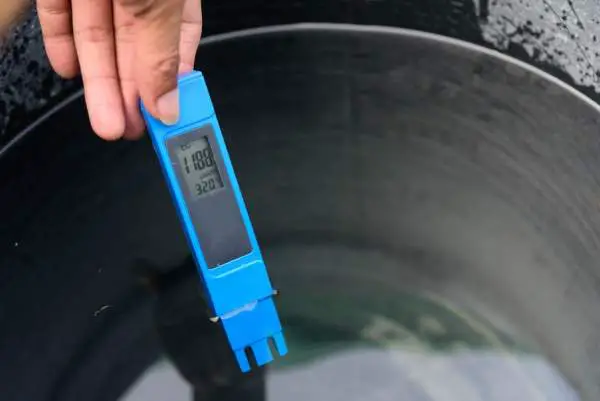One of the main questions which catch new growers out is that of how often they fertilize their hydroponic system. Once their systems are up and running, this frequency can be a lot less than many growers think.
As a general guide, if you are remixing your nutrients between 7 and 10 days, then just topping off your reservoir with plain water will be sufficient. However, you will need to check daily because the strength of your nutrient will change as plants take up water.
The nutrient levels should sit in a range of between 800 to 1500 ppm (parts per million), this can vary depending on the kind of plants being grown.
Here we will look more in-depth at how you need to set your reservoir and maintain the right levels of fertilizer and nutrients. We will also look at two ways growers determine the right times to add more fertilizer to their system.
Selection and Preparation of Nutrient Solutions
When it comes to hydroponic nutrients, you can go about this a few different ways. You can purchase ready-made solutions, you can buy nutrient solutions which come in two or three parts or you can make your own from scratch.
For growers with small gardens, it is advisable to go with the two- or three-part solution. This allows you to be flexible and tailor your nutrients to the type of plants you are growing, and the stage that they are at in their growth.
There are a few factors, which determine the proportion of nutrients you use in your system. This will be the same regardless of the way you get your nutrients from the above three methods.
- Plant type and variety
- Growth stage of plants
- Plants parts you want to encourage growth and development
- Intensity of light, weather, season and grow room temperatures
If you decide to go with a ready-made solution, be sure it is made specifically for hydroponic systems. Fertilizers, which are developed for soil lack many of the micronutrients required as these, are already found in the earth.
How EC Levels Affect Hydroponic Nutrient Solutions
To determine the nutrient concentrations in your solution, you will measure the EC (Electrical Conductivity) – we’ve written a complete guide which you can find here. To do this, you will use a digital EC meter. Once you take a reading, this will be converted into the dissolved solids, or as we know them the PPM (Parts Per Million).
These EC meters can help when you are mixing your solution, and it is at the correct solution, and they can help monitor the concentration over time.
One thing to note is that EC levels will never weaken on their own, and will always become stronger as plants absorb water faster than they absorb nutrients.
These EC meters are vital and will help growers to prepare their solutions, monitor their concentrations, dilute these as necessary, and know when it is nearly time to fertilize their system again.
EC Reading Problems
As helpful as EC meters are, they are not the solution to everything. While they are capable of giving you the PPM of your solution, they cannot differentiate between the various compounds of your nutrients. This can be a problem if you live in a hard water area, and a fair percentage of your PPM comes from unknown dissolved solids in your water.
Hydroponic Nutrient pH Levels
Once you have your initial mix, it will have a specific pH level. Depending on plant types, the optimal levels are around 5.5 to 6.3 in hydroponic systems. Each type of nutrient will be absorbed by your plants at varying rates, depending on the pH levels of your solution.
Solutions, which have a drop of under 5.5 of their pH, run the risk of having deficiencies in some nutrients while others are having a toxic effect as they are being absorbed too quickly.
If the pH rises too much, this can lead to speedier evaporation of micronutrients from the solution. This will lead to deficiencies in certain nutrients.
Checking pH levels is required almost daily, and sometimes, more than once per day. As plants continually absorb minerals and nutrients, pH levels will change, as will the overall EC / PPM of the solution.
We’ve written complete guides to test your pH levels, and show how to balance your pH if it’s not quite right!
Topping Off and Adding Fertilizers
There are two parts of the same area in your system. With the above, we saw ways for a grower to understand what is happening with their nutrient levels inside their tanks.
It is from here that you can find when to add, or how often you should fertilize your hydroponic plants.
Once you run your system, test your levels and once everything stabilizes, you will see that your water levels drop as your plants absorb fluids and nutrients. Aside from this, there will be a loss of water through evaporation.
When you first fill your tank, you should mark the high water level. You should check water levels daily and only top up to this mark. Depending on the type of system you have, you will top off every few days. It is here that plant type and temperatures come into play.
As you add water to your tank, you should record how much you add, it is this that can help you determine when you need to flush your system.
As you progress with your system, you will come to find that no nutrient mix is perfect, and there will be problems along the way. For this reason, flushing a system is vital to have a fresh start and correct any imbalance in your system. pH swings or EC levels that are totally out of balance are the main things.
This flushing of systems comes under much debate and discussion. You will also find that this determines how often you fertilize your hydroponic system.
Adding Fertilizer after Flushing Systems
There are two ways that growers look at when to flush their system and thus introduce a new set of fertilizer to their system. A general rule, which is often used, is that reservoirs will be emptied and re-filled no longer, than ten days into any growing phase.
This will be an extreme case because it will be determined by EC levels. On average, the time to change would be between 5 and 7 days. However, these EC readings can cause issues. Because they give an overall picture, it is hard to know which nutrients are at what levels.
Growers who follow these methods will do so because it is the only sure way of knowing what levels of each nutrient they have in their system.
The second method of adding fertilizer to your system goes a little further than the above. If you are rigid with a ten-day flush, then you can waste precious minutes.
The second way uses the 50% method. This looks very similar to the above yet it doesn’t have a set time associated with system flushing.
The way this works is to measure your reservoir when you first fill it and record the number of gallons. Check your levels every couple of days and top up with plain water. You proceed in this manner until you have replaced 50% of your starting number of gallons.
Once you have replaced half the liquid, you then cease topping off your tank and let the solution levels run down until they reach the top of your water pump.
At this stage, you can clean and drain your tank, and then add a new batch of nutrients or fertilizer.
One tip when using this method is for flood and drain systems. Because there can be salt buildup, it is advisable to flush your growing pots, growing medium, and also your plants to rid them of accumulated salts.
Conclusion
As you can see from the information above, you will in act fact only fertilize your system once at each stage of growth. This, of course, will vary depending on how long it takes your plants to grow from seedlings until harvest.
Both of the methods above may be suitable for many growers, however, the 50% method will cut down on waste. However, as the nutrient solution will be weakened by half, you may begin to see slow-growing plants showing signs of nutrient deficiencies toward the time you are almost ready to flush your system, and add a new batch.
Finding the method, which is best for your garden, is straightforward, and monitoring pH and EC levels can be the easiest way to make sure you have this control. One final note is that you are better off adding less rather than more when it comes to hydroponic nutrients.
Related Questions
Why should I not add more nutrients when I top my system up with water? The reason for not adding more nutrients when you top up with water is that the concentration becomes stronger. When this happens, certain compounds become toxic to plants.
How does weather affect nutrient requirements? Plants will have higher nutrient requirements in the colder times of the year; they will also have a lower requirement in the hotter months when they need to take up more water. However, if your grow room is always the same temperature, or never falls below a set temperature, then this scenario should never occur.





